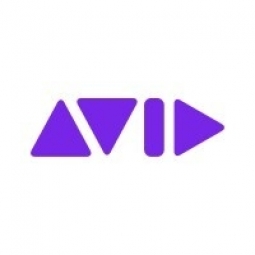Technology Category
- Networks & Connectivity - Radio Access Network
- Sensors - Acoustic Sensors
Applicable Industries
- Buildings
- Cities & Municipalities
Use Cases
- Smart City Operations
- Time Sensitive Networking
Services
- System Integration
About The Customer
Riot Fest is a multi-day music festival in Chicago that started in 2005 and has been held in the city’s Douglas Park since 2015. The festival is managed by veteran production manager, Grant Simmon, who has been involved in many major music festivals including Lollapalooza, Austin City Limits, Bonnaroo and others. Local sound company Technotrix, led by Audio Department Manager Brent Bernhardt, was responsible for the festival’s two main stages: “Riot” and “Roots”. Technotrix handles most of the City of Chicago events funded by the mayor’s office, as well as supporting Lollapalooza and many other national festivals, and have long relied on VENUE consoles to support their festivals and events.
The Challenge
The challenge was to provide festival engineers with an intuitive, high-quality live sound console to handle mixing their artists at a demanding 3-day festival, Riot Fest, with minimal setup and sound check time. The festival required a system that could deliver exceptional sound quality and seamless show file compatibility. The system also needed to be user-friendly to accommodate the various engineers who would be operating it during the festival. The challenge was further compounded by the tight schedule and the high expectations of the festival's veteran production manager, Grant Simmon.
The Solution
The solution was provided by Technotrix, a local sound company, which used Avid VENUE | S6L systems at the Front of House (FOH) for the festival’s two main stages. The Avid VENUE | S6L was chosen for its familiar VENUE workflows, seamless show file compatibility, and exceptional sound quality. The system was also chosen for its serviceability, with the ability to replace surface modules on the fly with no interrupted audio. The system's flexibility, allowing the modules to be customized according to the user's workflow, was another key factor in its selection. Additionally, the system's integration with Waves SoundGrid servers was praised for its simplicity and efficiency.
Operational Impact
Quantitative Benefit

Case Study missing?
Start adding your own!
Register with your work email and create a new case study profile for your business.
Related Case Studies.

Case Study
Turning A Stadium Into A Smart Building
Honeywell created what it called the “intelligent system” for the National Stadium in Beijing, China, turning the venue for the opening and closing events at the 2008 Summer Olympics into a “smart building.” Designed by highly controversial artist Ai Weiwei, the “Bird’s Nest” remains one of the most impressive feats of stadium architecture in the world. The 250,000 square meter structure housed more than 100,000 athletes and spectators at a time. To accommodate such capacity, China turned to Honeywell’s EBI Integrated Building Management System to create an integrated “intelligent system” for improved building security, safety and energy efficiency.

Case Study
Energy Saving & Power Monitoring System
Recently a university in Taiwan was experiencing dramatic power usage increases due to its growing number of campus buildings and students. Aiming to analyze their power consumption and increase their power efficiency across 52 buildings, the university wanted to build a power management system utilizing web-based hardware and software. With these goals in mind, they contacted Advantech to help them develop their system and provide them with the means to save energy in the years to come.
.png)
Case Study
Smart Street Light Network (Copenhagen)
Key stakeholders are taking a comprehensive approach to rethinking smart city innovation. City leaders have collaborated through partnerships involving government, research institutions and solution providers. The Copenhagen Solutions Lab is one of the leading organizations at the forefront of this movement. By bringing together manufacturers with municipal buyers, the Copenhagen Solutions Lab has catalyzed the development and deployment of next-generation smart city innovations. Copenhagen is leveraging this unique approach to accelerate the implementation of smart city solutions. One of the primary focus areas is LED street lighting.

Case Study
Buoy Status Monitoring with LoRa
The Netherlands are well-known for their inland waterways, canals, sluices and of course port activities. The Dutch Ministry of Infrastructure indicates that there are thousands of buoys and fixed items in and near water environments that would profit from IoT monitoring. One of the problems with buoys for example, is that they get hit by ships and the anchor cable breaks. Without connectivity, it takes quite some time to find out that something has happened with that buoy. Not to mention the costs of renting a boat to go to the buoy to fix it. Another important issue, is that there is no real-time monitoring of the buoys at this moment. Only by physically visiting the object on the water, one gains insight in its status.

Case Study
Barcelona Case Study
Barcelona’s heavy traffic and its associated high levels of pollution were the primary factors that motivated some companies and universities to work on strategies for improving traffic in the city centre. Bitcarrier is one of the technologies involved in the In4Mo Project, whose main objective is to develop the applications that form the core of smart mobility, one of the fundamental pillars of the smart city concept.








